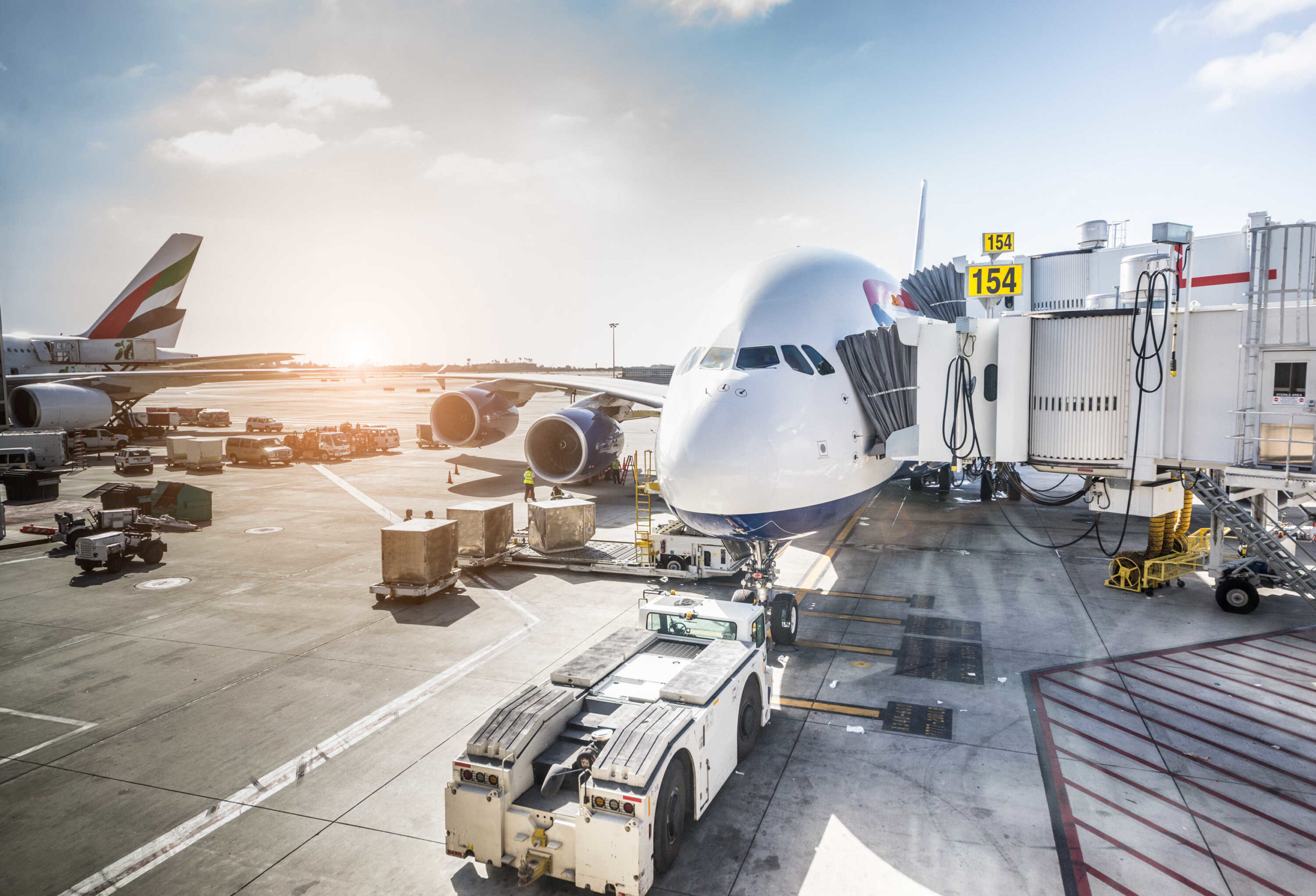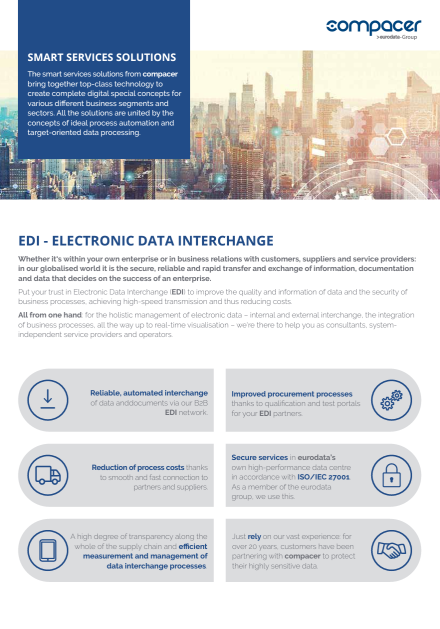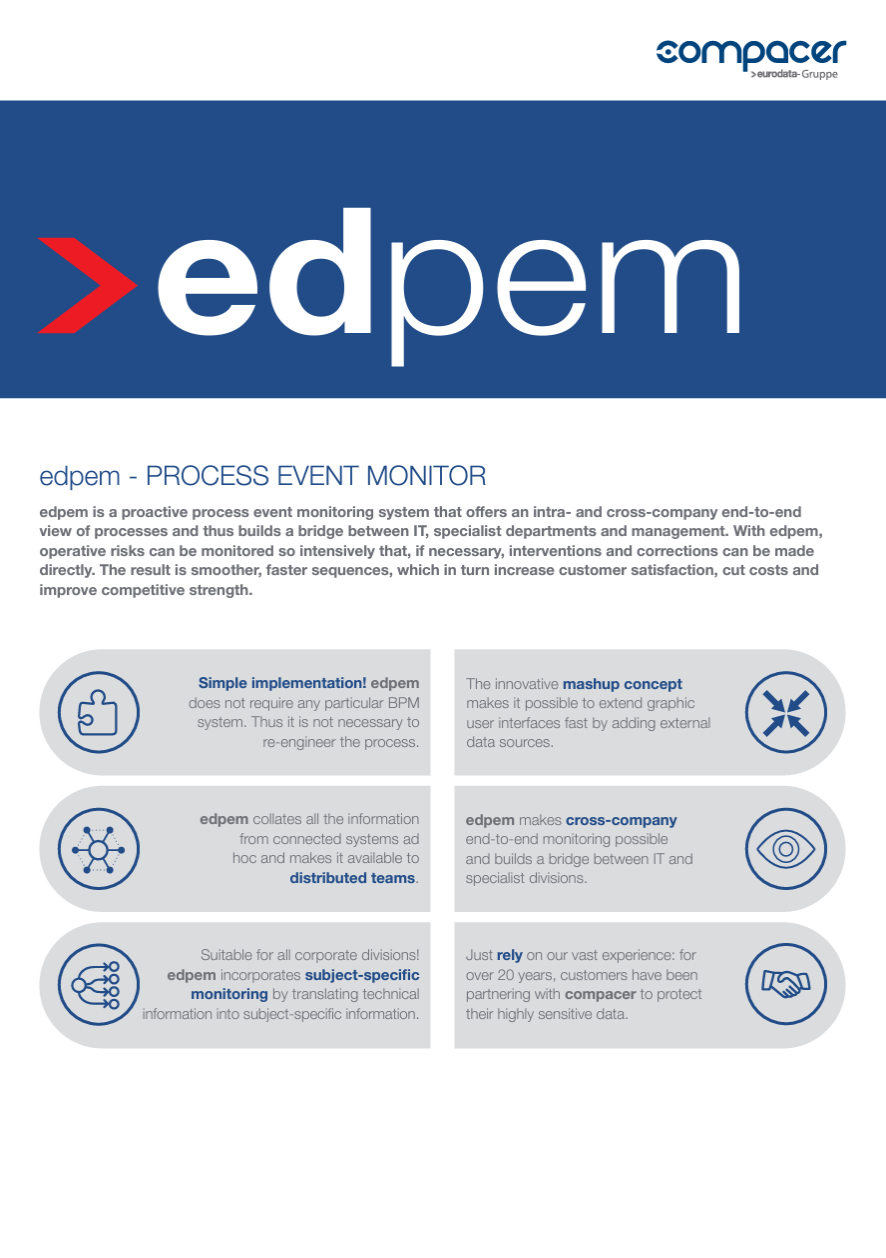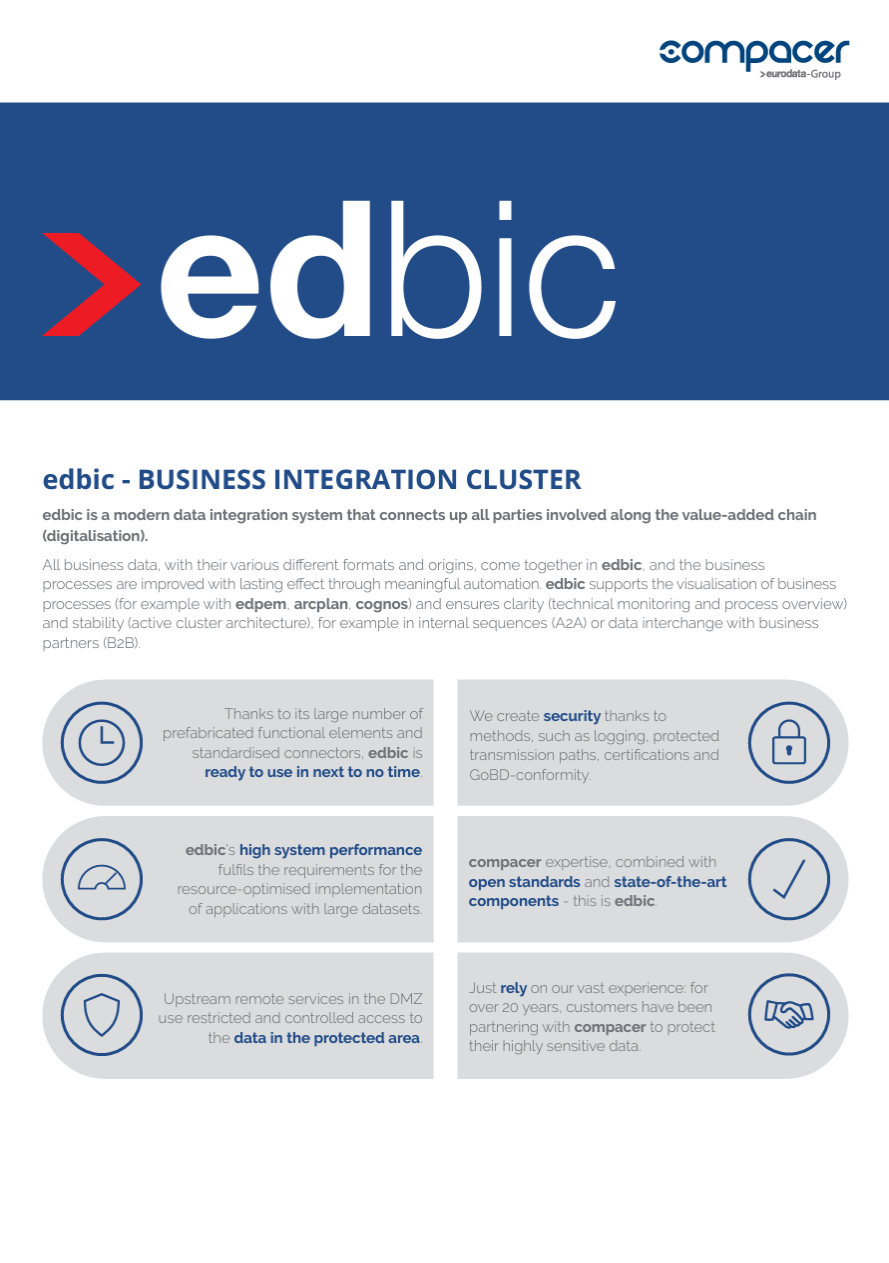The challenge
The vision of a provider of ground services and cargo handling is to offer its services to the aviation industry from a single source. The company has therefore decided to constantly drive innovation in the industry in key areas such as service, quality and reliability. To achieve this, the transparency of individual cross-divisional processes had to be increased through integration and networking so that communication could take place in these areas. Irregularities in process flows were to be monitored in future, so that ground handling services had to be optimized. One challenge is the cooperation with different service providers and their IT systems. These change not only internally from department to department, but also externally across the airports. Uninterrupted operation must be guaranteed throughout the entire project.
The solution
The project described here was implemented as a show case in several steps. The main actor was the process event monitoring tool edpem, which was used to monitor the ground services process. In order to ensure short aircraft turnaround times, the critical path in the process flow had to be measured and monitored - especially at the point where the process switches from one provider to the next. By using edpem, various events were recorded, such as parking/break-set, deboarding finished, cleaning started/finished, catering started/finished, fueling started/finished, crew on board, loading finished. This enabled service level agreements (SLAs) to be tracked and monitored, and reasons for delays, for example, to be identified and improved. Ground handling services were optimized by measuring service duration and detecting irregularities in the process flow. However, not only were classic EDI processes monitored, but reports were also visualized, which made reporting easier and also led to faster decisions. The result was impressive: Shorter handling times and a reduction in disruptions to flight operations.
Our customer
is a European airport that provides ground services for around 265 million passengers a year and handles around 4.6 million tons of air freight worldwide. In addition, several of its warehouses are certified by IATA's CEIV for pharmaceutical logistics. In 2019, its 64,000 employees were active at 300 airports in 47 countries on six continents.


 White paper
White paper
 Data Sheet
Data Sheet
 Data Sheet
Data Sheet
